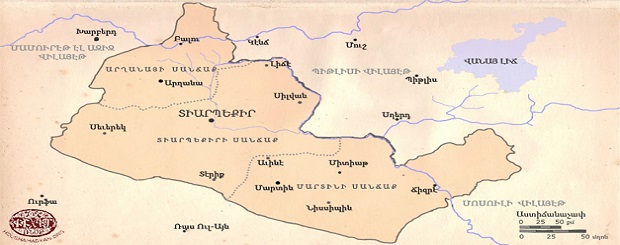
CULTURAL – Ancient underground cities of the territory of historical Armenia – NARE GALEMKERIAN
APRIL 29, 2022 – CULTURAL – HISTORICAL – ARMENIA.
Prepared by NARE GALEMKERIAN
There are many ancient buildings, monuments, temples and apartments in the Armenian and Greek territories occupied by Turkey, most of which have been demolished over time in order to erase the traces of Armenians and Greeks in these lands. While the buildings on the surface are familiar enough, the underground cities are little known, some of which are mentioned by the website Nicket Science and the German archaeologist Heinrich Kush in his book Tore zur Unterwelt.
Ն.
The unique skills and knowledge of the inhabitants of the Armenian highlands
Apparently, mortar was first used for construction when building underground tunnels in present-day Turkey around 8,000 years ago.
Evidence of the existence of underground passages has been found in a dozen settlements across Europe. These huge roads are often referred to as “old roads”. They stretch from the Armenian Highlands to northern Scotland.
These passages testify to the obvious ingenuity of ancient civilizations, the existence of which we are almost unaware of, except for a few notes in historical books. In fact, it turns out that these civilizations of 8,000 years ago had enough knowledge and tools to be able to build such complex underground structures.
Cappadocia is a remarkable example. Portasar (unfortunately better known as Turkish Keopekli Tepe), Nevsehir (formerly Mushkara) and the underground city of Malakop (Turkish: Terinkeoyu) testify to the exceptional knowledge of the inhabitants of the Armenian highlands thousands and thousands ago of years.
Heinrich Kush
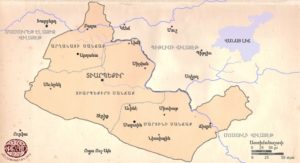
Underground of the First Christians
The city conquered by Tigranes the Great
Found in Turkey
Excavations in a small cave in the southeastern Turkish town have led to an unexpected find.
Archaeological excavations began two years ago in the town of Mitiat, in the Turkish province of Martin, as part of a project to clean up and preserve historic streets and buildings.
Mithiat is an ancient city that existed in the 9th century BC, then Assyria. the king took the city.
But there are speculations that the city was founded in the third millennium BC, when the Khurais came to these countries, who later founded the state of Mitan.
For many centuries, the city remained Assyrian, with the exception of rare areas of conquest. So, BC A. The lands around the century were occupied by Tigran B., and they became part of Greater Armenia. Later, during the time of Emperor Trajan, they were spotted in the Roman province of Assyria.
From 150 BC to 250 AD, Mithiat was part of the Kingdom of Edesia.
As Christianity spread to Asia Minor, the Assyrians of Mithia quickly adopted a new religion. This land is the cradle of the Eastern Assyrian Church.
Archaeologists claim that the modern inhabitants of Mithia were aware of the existence of caves throughout the city, but attached no importance to them.
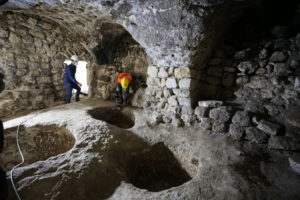
Historical sources say that Mithias got its name from an Assyrian word meaning “City of caves”. He also meets T. before Jesus Christ. in the inscriptions of the century.
Scholars believe the caves under the city have always existed, but they were inhabited around 1900 years ago, during the Roman persecution of the early Christians.
During excavations in the underground city, tabernacles, separate rooms with a clearly religious character, food warehouses, wells and corridors were discovered.
Underground cities have already been discovered in Asia Minor, the most famous of which are Derinkeoyu and Nevsehir in Cappadocia. But while the former was excavated and used thousands of years ago, the latter is dated by scholars to a period no older than Byzantium.
According to the head of the excavations, Gianni Tarkan, the underground city of Mitiat differs from them in that it has been in continuous use for almost 1900 years. It was originally built as a hideout.
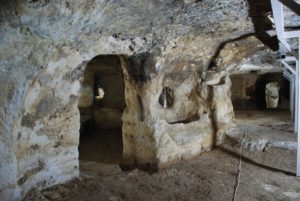
As is known, B. Christianity was not an official religion for a century. Christian families and groups were usually kept in caves to avoid Roman persecution.
Tarkan also thinks that 60-70,000 people could live in the city. This is a very audacious hypothesis, and we must at least wait for the end of the excavations and the study of all the discoveries.
Since the adoption of Christianity by the Assyrians, Mithiat is considered the most important center of this religion in the Middle East. Although Assyrians had long constituted a significant part of the city’s population, Armenians and Greeks gradually settled in these areas, who also quickly converted to Christianity.
And after Christ G. In the 19th century, the kingdom of Edesia was conquered by the Sassanids (the ruling dynasty of Iran) and became part of their empire.
Then a series of wars broke out between the Byzantines and the Sassanids, the Byzantines and the Arabs. In the 19th century, these lands were occupied by the Seljuk Turks.
Despite Islam becoming the official religion, a number of Christians remained in Mitat, mostly Assyrians and Armenians.
16 In the 19th century, Mithiat was besieged and captured by the ninth Sultan of the Ottoman Empire, Selim A.
Islamists, including Kurds, settled in the lands of ancient Assyria.
From time to time they tried to ethnically cleanse, but then they just tried to rob the wealthier citizens, who were mostly Assyrians and Armenians.
However, the authorities did not allow such plunder to cross a certain border until 1915, when the Ottoman Empire began to systematically exterminate Assyrians and Armenians.
The underground city with its school
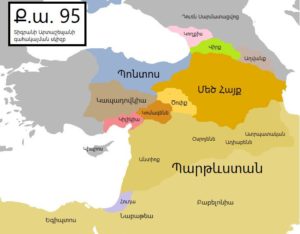
One of the most famous underground cities in Cappadocia is the Greek city of Malakopi (Turkish: Terinkeoyu) in Turkey, which was built in the Byzantine era when its inhabitants took refuge there to escape persecution from Muslims Arabs and Arabs (7). The multi-tiered city extends to a depth of about 85 meters. It is home to 20,000 people with their livestock and groceries. Malakopi, which consisted of many holes and caves, is the deepest underground city in Cappadocia (and all of Turkey).
The city, like other underground complexes in Cappadocia, had facilities such as wine and oil presses, stables, cellars, warehouses, refectories and chapels. Vestiges of cellars, stables and chapels have been found.
The spacious bedroom on the second floor with a barrel ceiling is special. It is reported that this room was used as a religious school.
The 55-meter-long airway is believed to have been used as a well, supplying water to the upper villages and, if the outside world was dangerous, to those sheltered below.
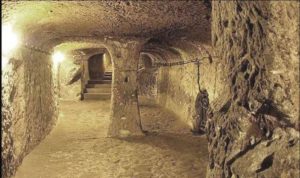
The caves were originally built by the Phrygians on the soft volcanic rocks of Cappadocia in the 8th and 7th centuries BC. When the Phrygian language died out in Roman times and was replaced by its cousin, Greek, the inhabitants, now Christians, expanded their caves into deep, multi-storey structures, adding chapels and Greek inscriptions.
In its heyday, the city had two large stone gates that closed from the inside in case of imminent danger.
Although the residents may have been safe, they lived their lives to the fullest, as much as in the city above. One of the brightest areas of Malakopi is the great hall with vaulted ceilings, which is believed to have been a religious school with separate classrooms. Malakopi was also connected to other underground cities by an intricate network of slopes.
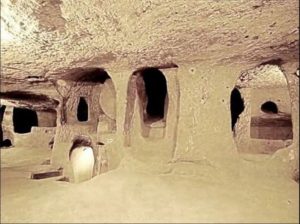
These cities continued to be used by native Christians as protection against Mongol invasions from Lenk Timur in the 14th century.
When the region fell to the Ottomans, the towns were used by the natives as a refuge to escape Turkish rule.
Even in the 20th century, the local population, the Cappadocian Greeks, still used the underground cities to avoid regular persecution.
For example, Richard McGillvray Tokins, a linguist from the University of Cambridge in Britain who studied the Greek-speaking natives of Cappadocia in the region from 1909 to 1911, reported that by 1909 most of the population of the Axos had not taken refuge in some of these countries. plains.
In 1923, the area’s Christian population was expelled from Turkey and relocated to Greece due to population exchanges between Turkey and Greece.
The underground rooms have been abandoned.
They were rediscovered in 1963 when a local resident found a mysterious room behind the wall of his house. Later excavations revealed the entrance to a chain of traps.
It was opened to visitors in 1969, although only half of the city is accessible to view.
www.aztagdaily.com/archives/544868:
Translated into French by lousavor-avedis.org/
